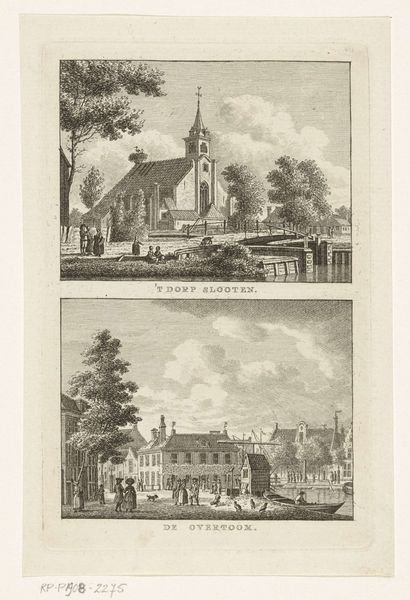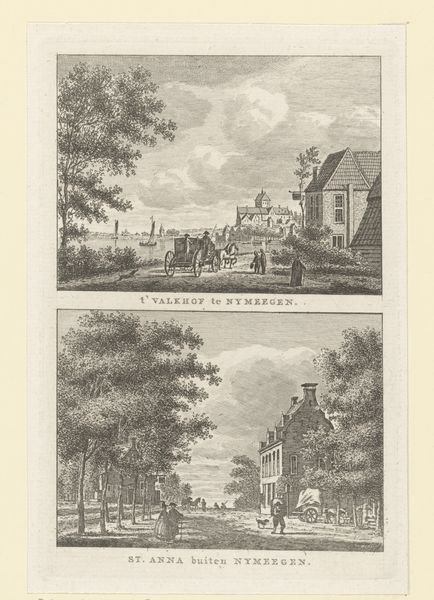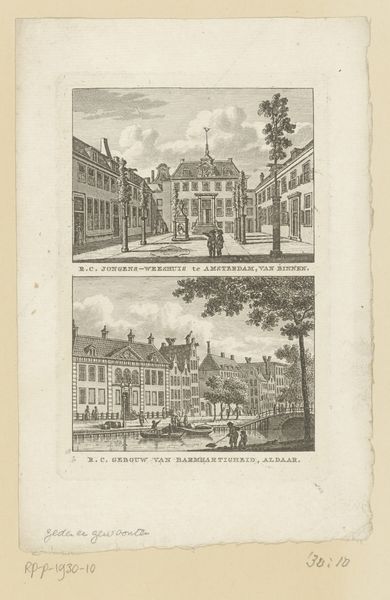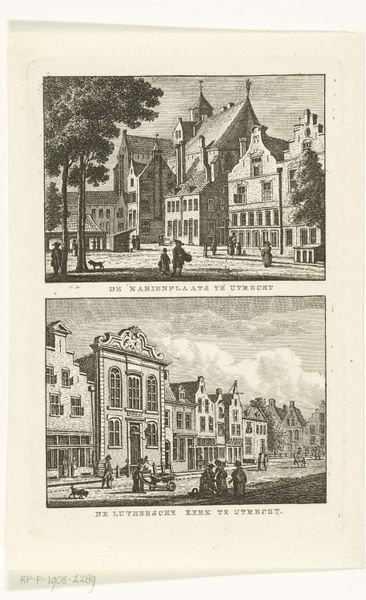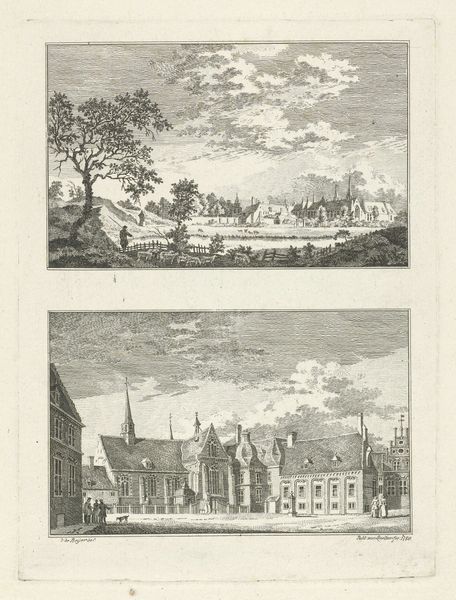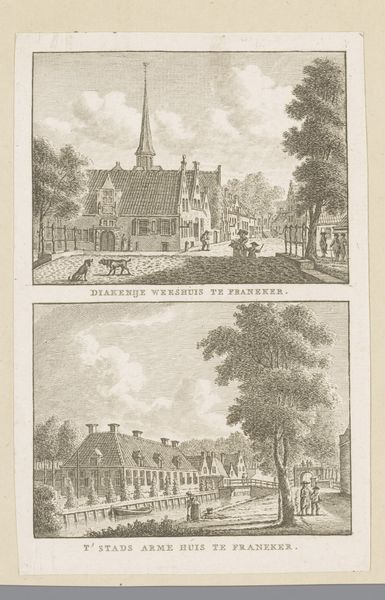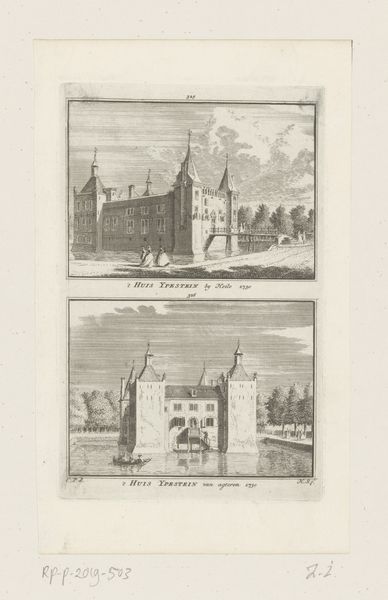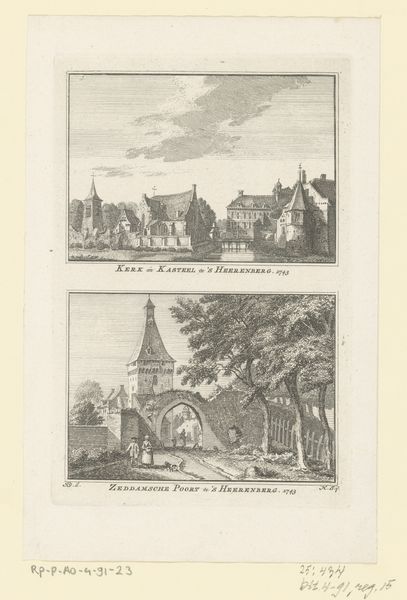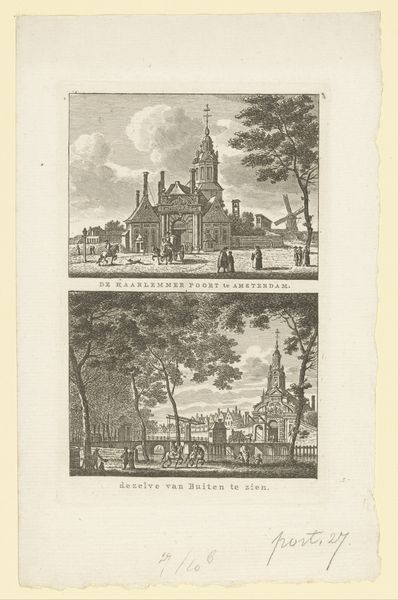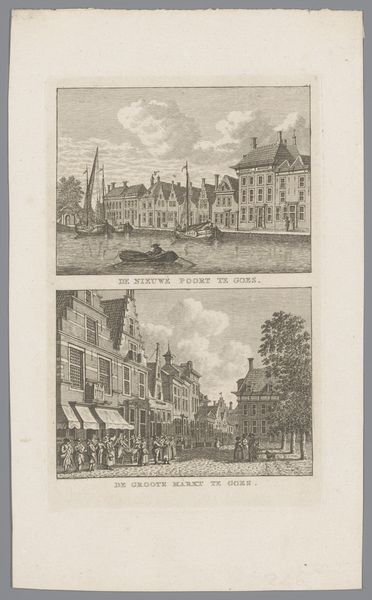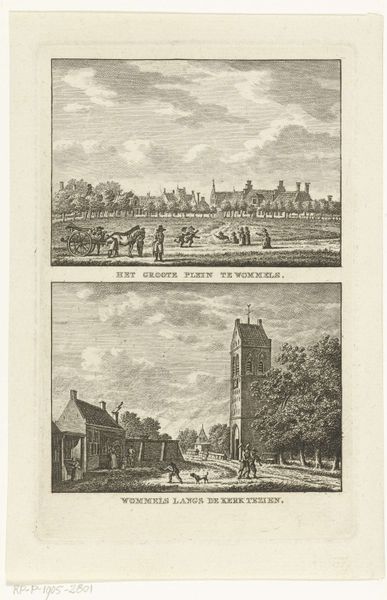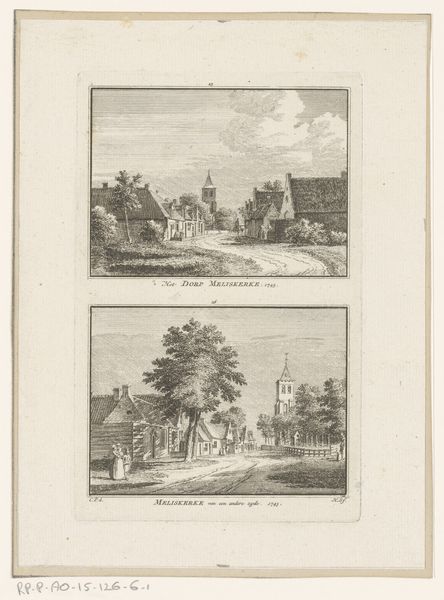
Twee stadsgezichten: Zuiderpoort te Stavoren en stadhuis te Stavoren 1786 - 1792
0:00
0:00
carelfrederikibendorp
Rijksmuseum
drawing, print, etching, engraving
#
drawing
#
dutch-golden-age
# print
#
etching
#
landscape
#
cityscape
#
engraving
Dimensions: height 172 mm, width 110 mm
Copyright: Rijks Museum: Open Domain
Curator: Looking at this print, "Twee stadsgezichten: Zuiderpoort te Stavoren en stadhuis te Stavoren," created between 1786 and 1792 by Carel Frederik Bendorp, I'm struck by the contrasting modes of production it embodies. Two city views, meticulously rendered, speak volumes about labor and the social order of the time. What strikes you about this piece? Editor: It's interesting to see these two scenes side-by-side, like a then-and-now. The upper image seems more rural, focused on agriculture, with the Zuiderpoort almost acting as a gateway. The bottom image highlights civic life. As prints, they are of course made to be distributed…How would these city views have circulated and been consumed during this period? Curator: Exactly. The medium of print—specifically etching and engraving here—is key. These weren't unique objects for elite collectors. Prints allowed for wider distribution and consumption of images, bringing views of Stavoren to a broader audience. We must ask: Who were these images *for*? Were they for locals, reinforcing civic pride, or were they aimed at a wealthier, urban audience interested in picturesque views of smaller towns? Editor: So, by looking at the process, we can consider its viewers and potentially its purpose...It’s more than just aesthetic appreciation, isn't it? The material and how it’s consumed informs our understanding. Curator: Precisely. Think about the labour involved in creating the copper plates, printing the images, and distributing them. Whose hands were involved? And how did this process reflect or reinforce the social hierarchy? This print isn’t just a pretty picture; it’s a record of production and consumption. Editor: So much is unveiled when we go beyond just *looking*. Examining the how and why really opens up the possibilities in these artworks. Curator: Indeed. Thinking about the material realities and social context surrounding the creation of art gives us access to powerful insights into the past.
Comments
No comments
Be the first to comment and join the conversation on the ultimate creative platform.
